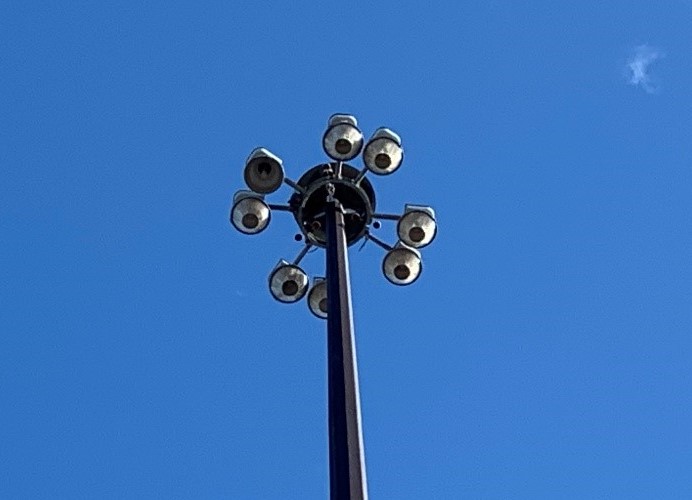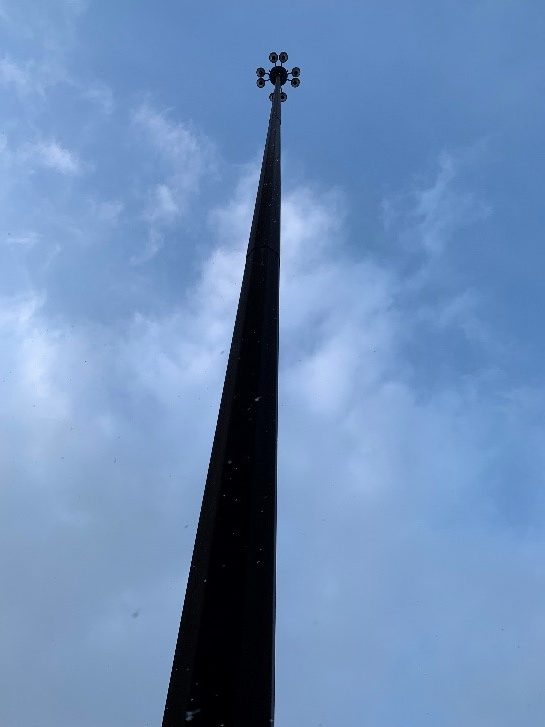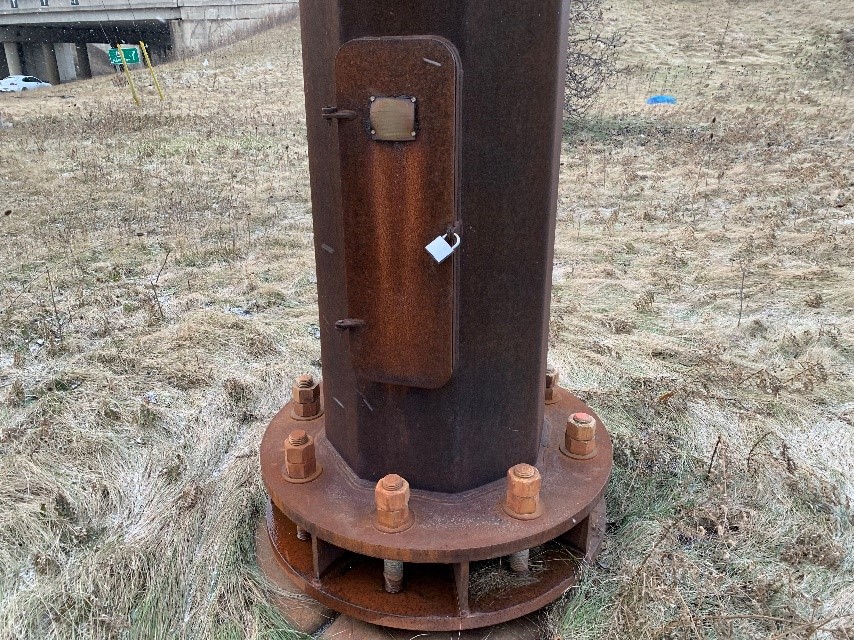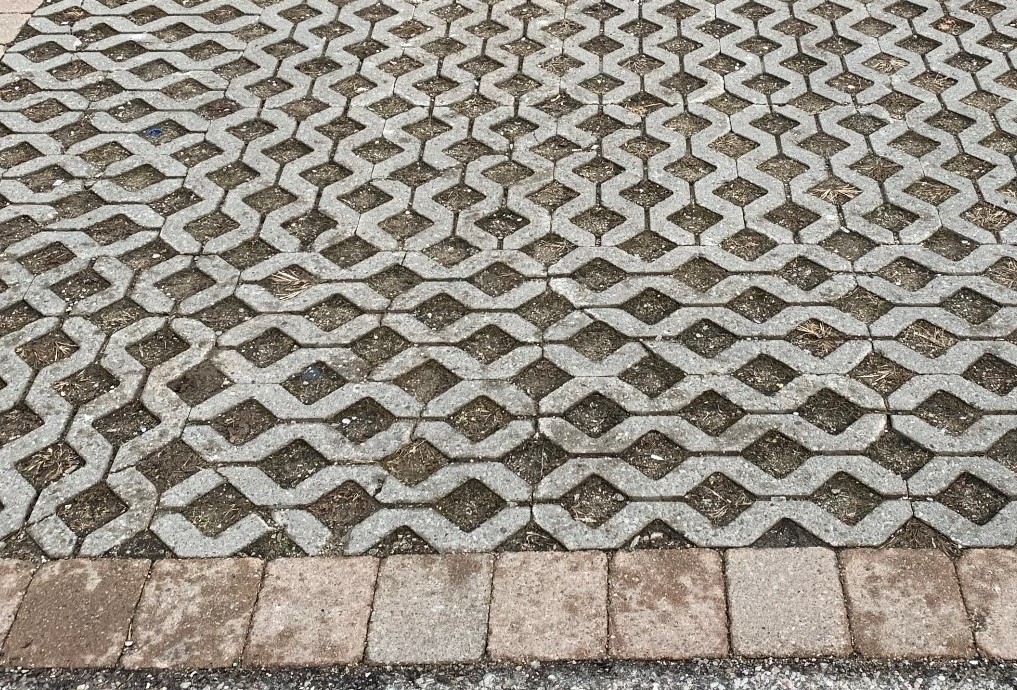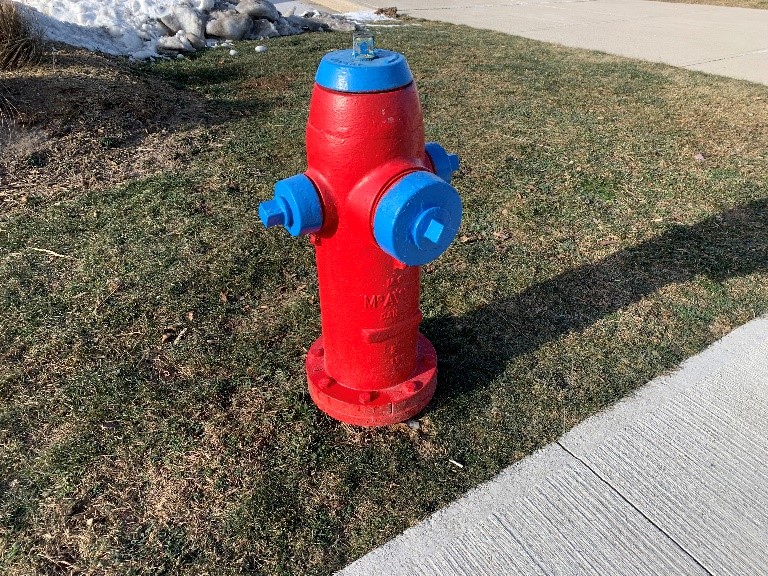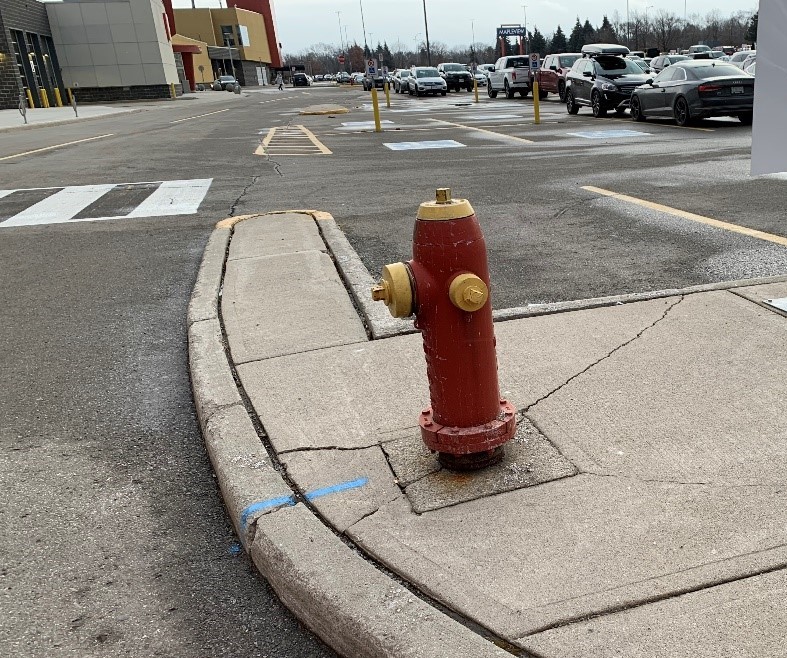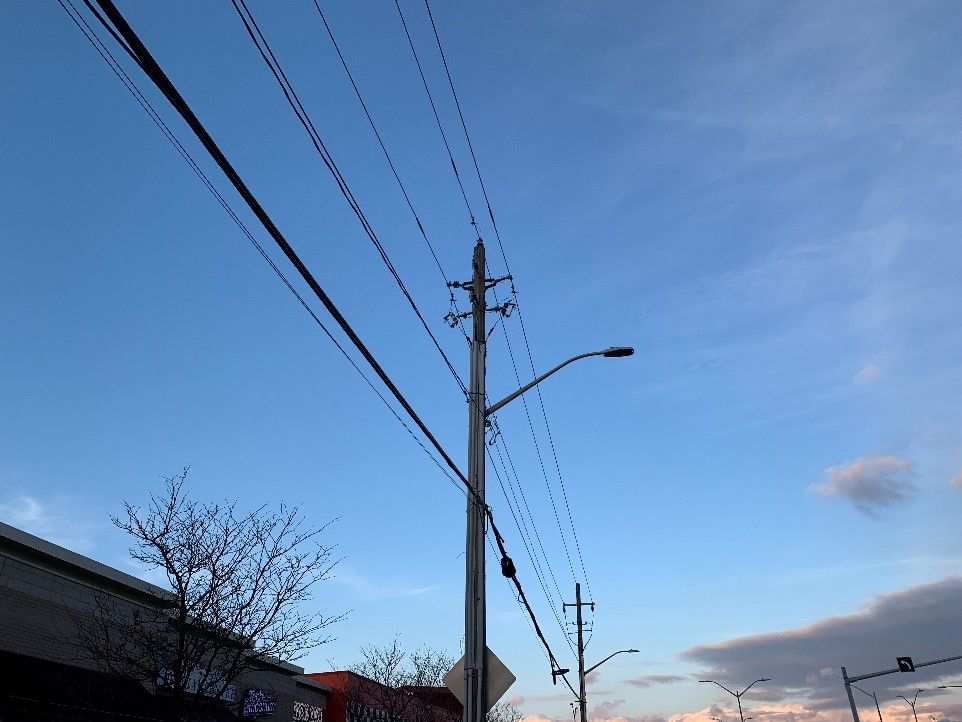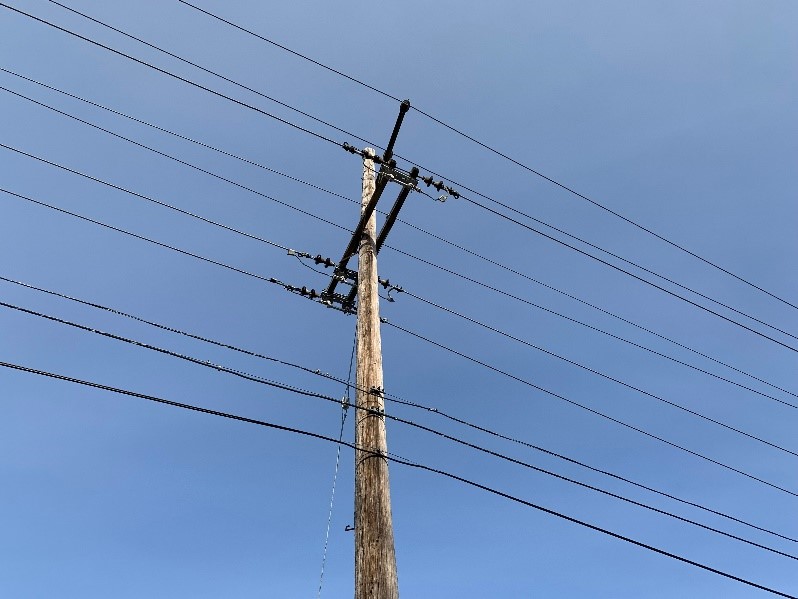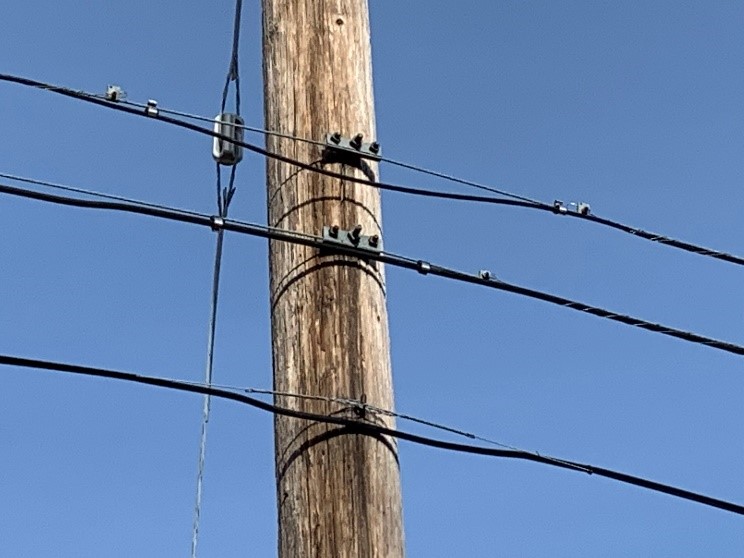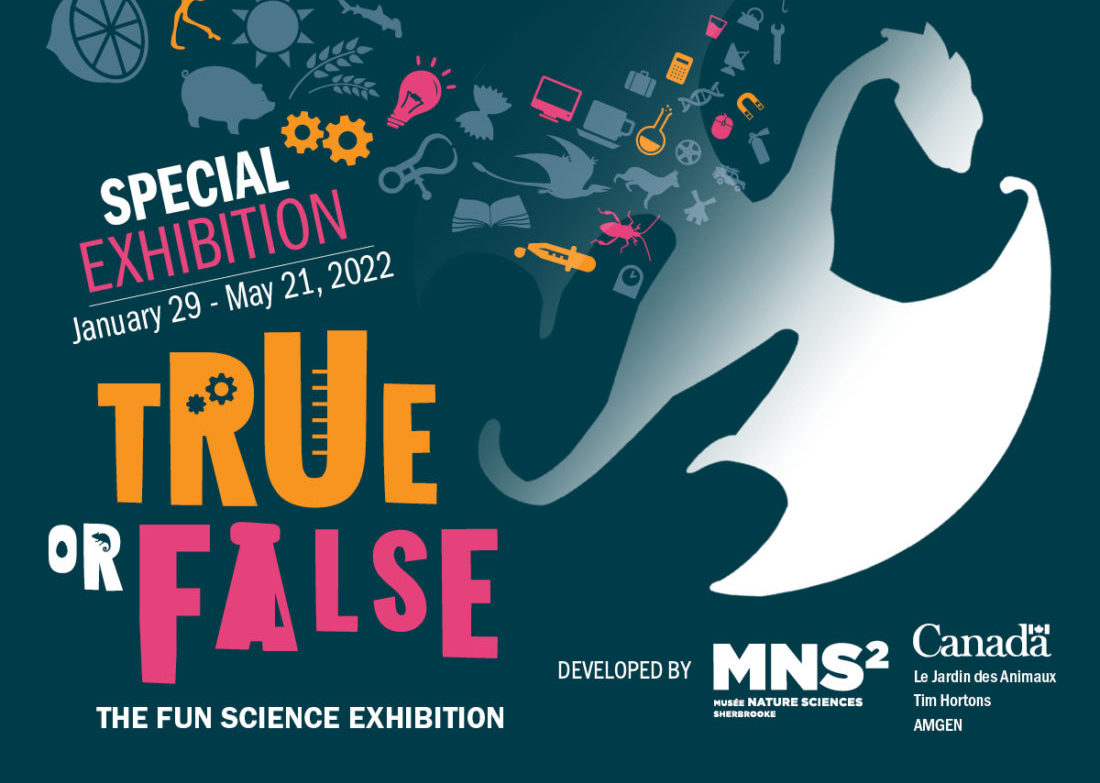Knowing how things work is fun, but it’s okay to take some things for granted. Engineers don’t do it for praise, we just enjoy seeing things work. Here are some examples:
1. How are lightbulbs changed on high-mast light poles?
The high-mast light poles on highways are over 30 m tall. Forget the ladder. And man lifts tall enough for that exist but are huge and require solid level work pads that don’t often fit in highway corridors. The push to get brighter and more complete lighting coverage along highways and to reduce the clutter of poles has moved these light masts to get taller and taller over time. A roadway that used to take a several dozen smaller light poles a long time ago can now be covered with a half-dozen tall masts (see Figure 1).
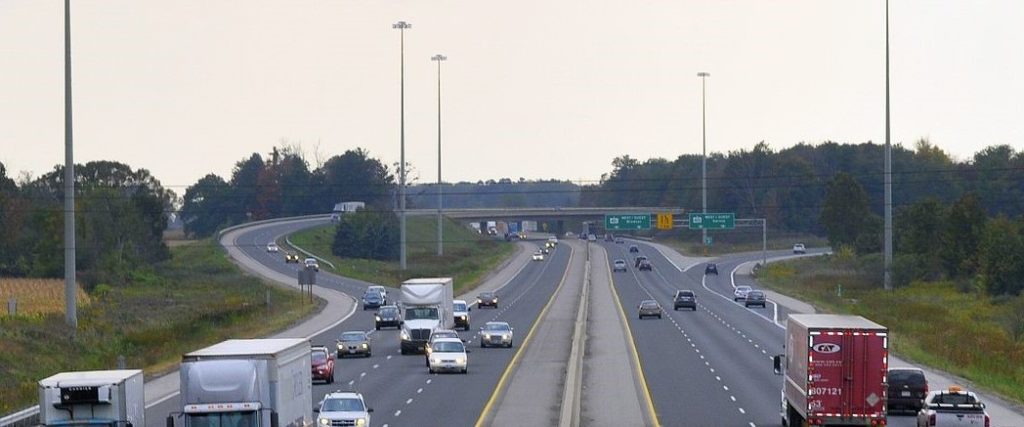
The high-mast lighting system is made of the following main components: the foundation, the pole, the light ring or light holder (ring at the top of the pole holding the lights), and the light fixtures. To simplify changing light bulbs, instead of going up to the fixtures, these high-mast systems allow the light holder to come down to ground level via winch and cables (see Figures 2 and 3).
Maintenance done from ground level and without heavy equipment is quicker, less expensive, and much safer. For interesting videos on high-mast lighting systems go to:
Installing Holophane High Mast Lowering Devices (YouTube)
High Mast Light Maintenance (YouTube)
2. Permeable pavement
Every time an open grass field is turned into a paved parking lot, it adds stress onto the city’s stormwater management system (all the storm sewer pipes underground). To help alleviate that stress, some parking lots incorporate permeable pavements that allow water to drain through into the ground. The most common of these pavements are made of concrete pavers (see Figure 4). This costs more than regular pavement so we don’t see this too often, but it’s an easy way to score sustainability points (future article) because it’s good for the environment.
A paved parking lot funnels a lot of rainwater into the storm sewer pipes, adding volume to the system. The best ways to reduce the volume is to either build a stormwater retention pond on the property (see my previous article: How Things Work: Stormwater Management Ponds) or make part of the lot with permeable pavement.
3. Fire hydrants
We all know what they do, even if we’ve never seen one live in action. Installed all over the city, hydrants give firefighters access to water when something’s on fire that shouldn’t be.
The portion of the hydrant we are familiar with is the red bollard above ground. This is called the upper barrel. But most of the hydrant is underground. Called the lower barrel, it connects to the city’s water pipes. The valve at the bottom of the lower barrel keeps the hydrant dry when not in use. This is called a “dry hydrant” — to prevent freezing during winter.
Hydrants today are designed to break away cleanly when hit by a stray vehicle. Water doesn’t come gushing out like in the movies. But in the event that they are hit, or need to be replaced or maintained, they each have their own isolation valve that disconnects them from the city water supply for that purpose (see Figures 5 and 6).
4. Overhead wires
On poles where there seems to be a countless number of overhead wires going down the street, power lines are always at the top because they are the ones that can cause the most damage if accidentally struck by a piece of construction equipment or if they come into contact with anything below. When the poles are carrying communication lines (phone, fibre optic, etc.), those are always at the bottom (see Figure 7). Damaging a communication line (comm line) can be very disruptive but won’t cause loss of life.
If you look closely, you’ll notice that it’s not the comm line that spans from pole to pole. It’s actually a high-tension steel cable capable of being pulled so tight that it reduces the sag significantly and is anchored to the poles. And the comm line is just hung from the steel cable (see Figure 8). It would break if pulled to that level of tension.
Who thought of all this? Teams of engineers, contractors, and entrepreneurs. Nothing is random when it comes to construction and engineering. Look around and be safe!
Fun fact: The most common colour for hydrants in the U.S. and Canada is yellow (not red) because it is easier to see at night.

Have you seen an interesting building or piece of infrastructure in or around Burlington that you’d like Eric Chiasson, your personal engineer, to write about?
Send us your suggestions, comments, or questions to articles@local-news.ca and we’ll see what Eric can find out!
Sources:
Lakeshore Fire Department. Hydrant Colour Coding. Url: https://www.lakeshore.ca/en/business-and-development/resources/Documents/FireHydrantColourCoding.pdf (accessed January 15, 2022).
For more information on the author: https://www.linkedin.com/in/eric-chiasson-10601082


